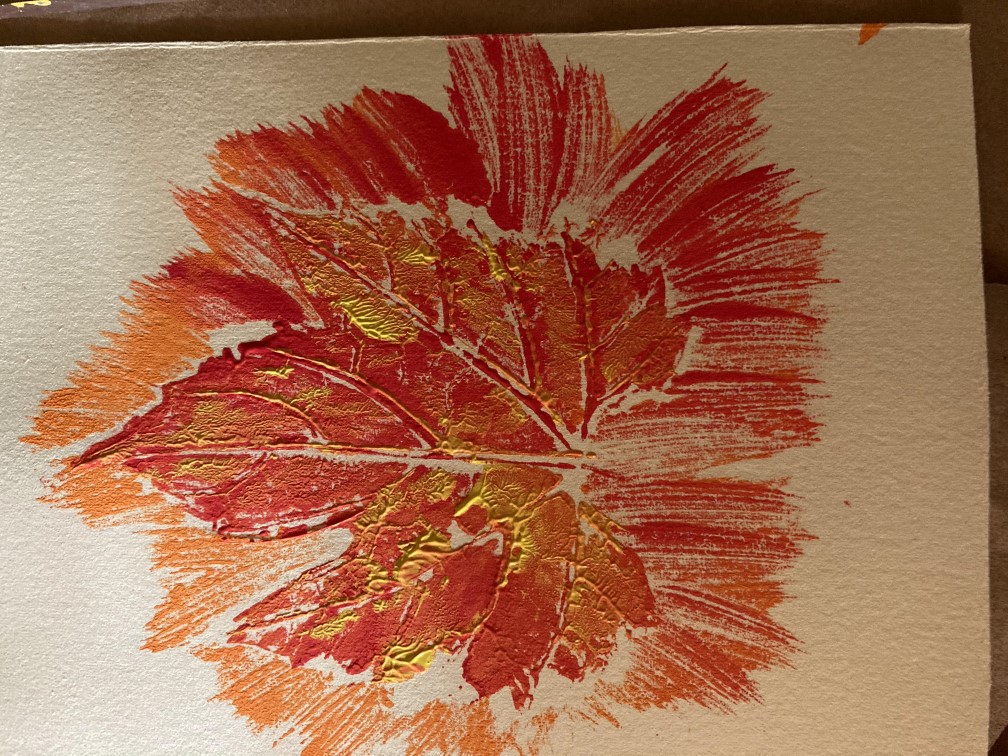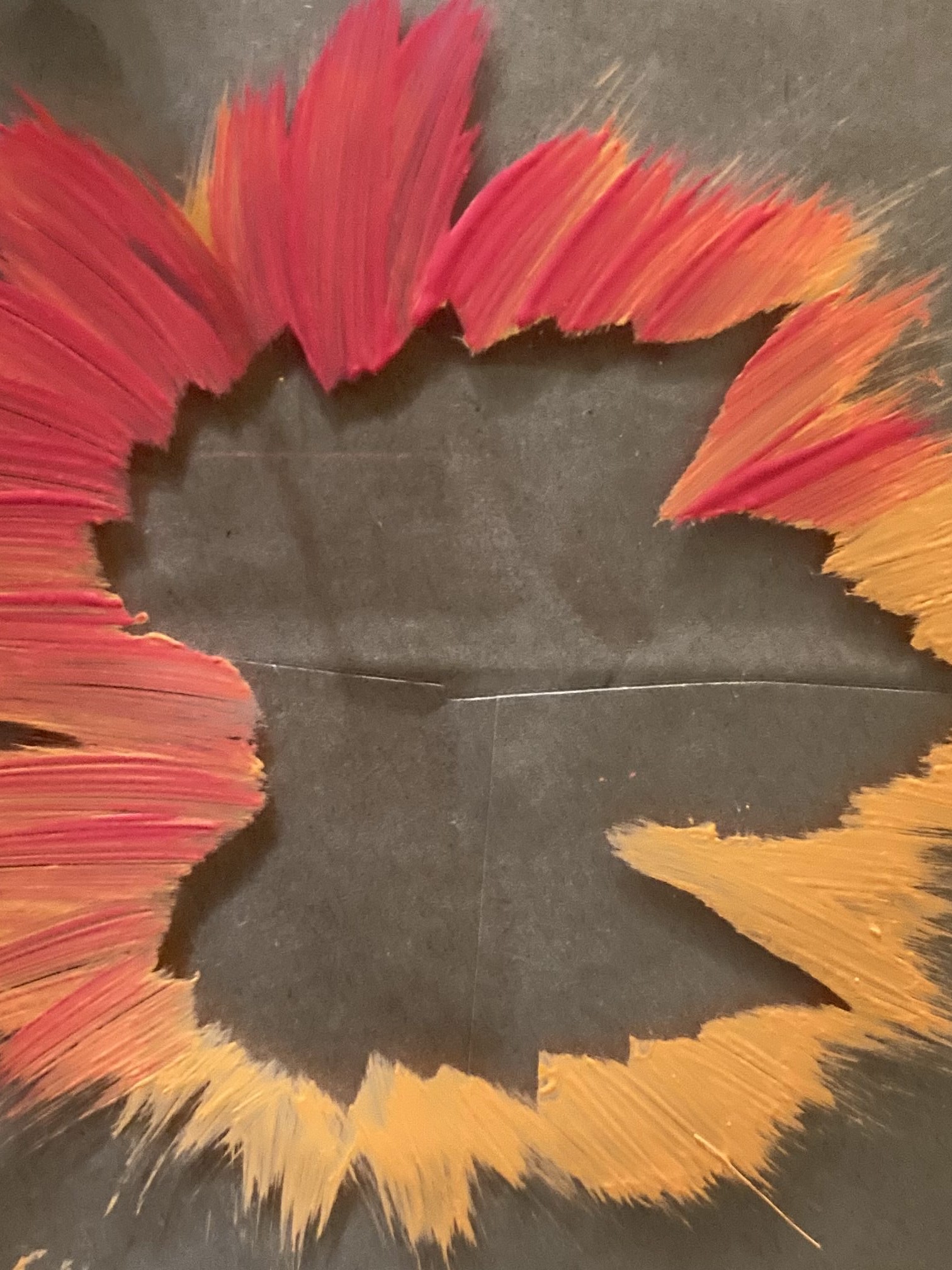October 4, 2020

Go, sit upon the lofty hill,
And turn your eyes around,
Where waving woods and waters wild
Do hymn an autumn sound.
The summer sun is faint on them—
The summer flowers depart—
Sit still— as all transform’d to stone,
Except your musing heart.
– Elizabeth Barrett Browning
I have spent an abundance of time considering trees recently- rediscovering their anatomy and processes, teaching children how to draw them, watching how the light plays through their branches and leaves, experimenting with them as a source of fabric dyes… and, of course, appreciating their glorious seasonal change. I have also picked up a fascinating and promising new read, The Hidden Life of Trees by Peter Wohlleben, about how trees communicate with each other. Concentrating so deeply on something I could easily take for granted as an adult has brought me back to a place of child-like wonder.
This week I have been reflecting specifically on how a single element speaks so broadly about the macrocosm of nature. All summer, green leaves resound with vitality. The fresh, soothing green is so abundant we can almost forget it, falling back yet holding us in the motion of constant liveliness. We are drawn outwards into the expanse.
Come autumn, their tone is hushed as the water element recedes, pulling back to reserve for winter. One may not consider the colors’ relationship to the forces of water, but knowing the leaves will further dry as they turn brown and decay, it is apparent the process begins just now when the verdant green is replaced with more muted hues. Even in their brilliant golds, oranges and reds, the trees do not sing out in quite the same way as their younger green selves. Instead, they seem to be in a fleeting, blazing dance of warmth and light before letting go to make room for the quietude of winter. Their death is a beautiful one and in it I learn again to appreciate death for what it truly is, simply a transformation.
I cannot endure to waste anything so precious as autumnal sunshine by staying in the house. – Nathaniel Hawthorne
My sons and I want to capture what we can of these spare “moments” of glorious autumn color. We are outdoors often, walking and playing, gathering golden and red treasures to bring into our art. This past week we used a collection of leaves in printmaking, both at home and at our Friday homeschool enrichment class.
We used the following materials:
-
Acrylic paint colors
-
Plexiglass
-
Paintbrush
-
Paper bag cut into scraps (one large to cover work surface, other small ones for practice prints)
-
A nicer paper for final printing (print paper, watercolor paper, multimedia paper)
-
Pliable, green or recently dropped leaves
 1. Lay the leaf down on the plexiglass vein-side up, and paint over the edges of the leaf, raying out onto the plexiglass. Work quickly and keep the paint fairly thick. If it is too thin, it will dry before you print.
1. Lay the leaf down on the plexiglass vein-side up, and paint over the edges of the leaf, raying out onto the plexiglass. Work quickly and keep the paint fairly thick. If it is too thin, it will dry before you print.

2. Remove your leaf and replace it with your paper. Place the paper once without moving it, and smooth the back of it with your hand. Peel the paper up and flip over, drying to the side as you bring your leaf back to the plexiglass. You should have a negative silhouette of your leaf surrounded by color.

3. This time paint all over the vein-side of your leaf with a different color of paint. Carefully place the leaf, paint-side down, on the silhouette and smooth the back of it with your fingers. Peel it carefully off the paper to reveal your printed leaf!
We often layered prints of the leaf, choosing a contrasting color, and experimented with paint application techniques. They turned out beautifully!

I love this idea with the leaves. Reminded me of childhood when you took leaves then placed paper on top then ran a crayon on top. Yours idea is much better though!
Side note, I’d be interested in hearing what your thoughts are about The Hidden Life of Trees.
This is really interesting and new to me. Thank you Acacia!
Warmly,
Sara
Thanks for asking! It’s an easy read, but gives some “food for thought”. Not all of the content is new if you have studied trees previously, but what is new is very interesting. I think for the mainstream scientific thinker he is lending a novel way of viewing and studying trees. Not that he is the first to consider that trees could feel or communicate, but it seems these ideas have generally been on the fringe and recent research bring them more credibility. Sometimes I think he gets a little too anthropomorphic for the cause, but I understand where he is going. The woods are magical to me, so I welcome his perspective.